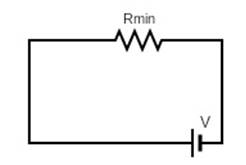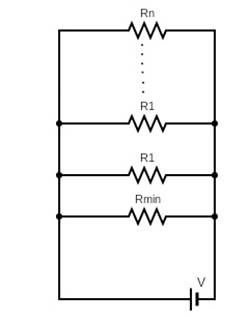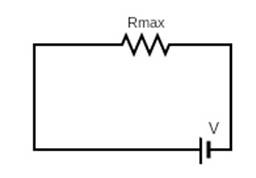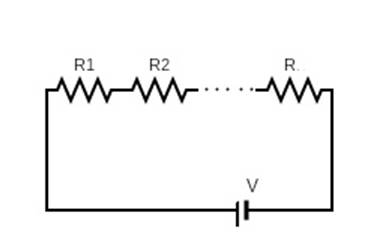Let there be n resistors R1 ............Rn with Rmax = max (R1......... Rn) and Rmin = min {R1 ..... Rn}. Show that when they are connected in parallel, the resultant resistance RP< Rmin and when they are connected in series, the resultant resistance RS > Rmax. Interpret the result physically.
When the resistors are connected in parallel,
![]()
![]()
This implies,
![]()
Hence,
![]()
When the resistors are connected in series,
RS = R1 + R2 + … + Rn > Rmax
Comparing the figures given below,
In the first case potential across Rmin is same as in case2. Hence current flowing through Rmin is the same. This means total current in case2 is more than that in case1. This means for constant value of V for a greater value of I ,Rp < Rmin.


Similarly,
Potential drop across Rmax is less in case1 than case2. This means Current flowing through Rmax in case1 is more than that in case2. Hence, for this to be possible Rs>Rmax.

